#Instructional Design
Text
Instructional Design in 5th Grade Science!
Welcome to the buzzing world of 5th grade science, where instructional design works its magic!
Engaging Adventures - Instructional design transforms lessons into adventures. From lively discussions to hands-on experiments, each moment is designed to engage young minds.
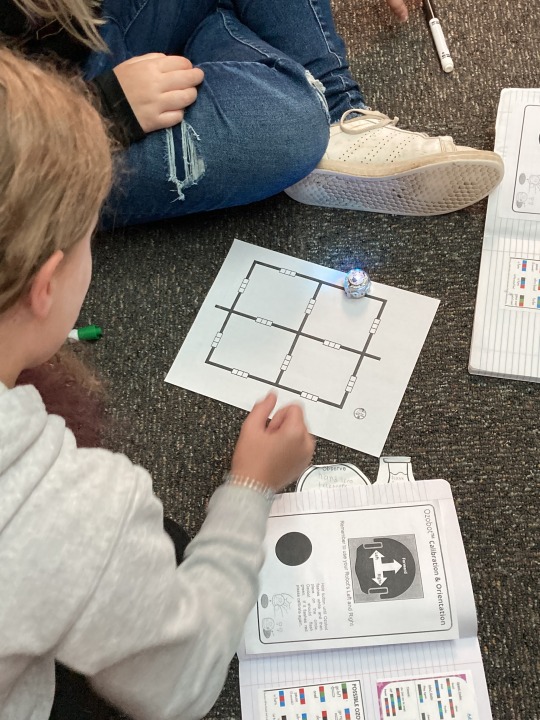
Hands-On Marvels - Forget textbooks! 5th graders are scientists in action! Instructional design turns the classroom into a lab, bringing theories to life through hands-on activities.
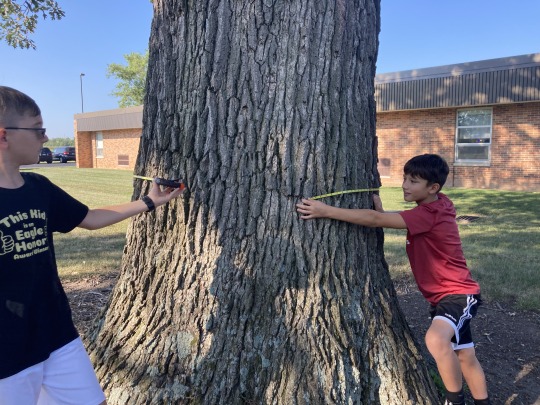
Curiosity Unleashed - Questions guide the journey. Instructional design fosters a culture of inquiry, turning students into investigators.
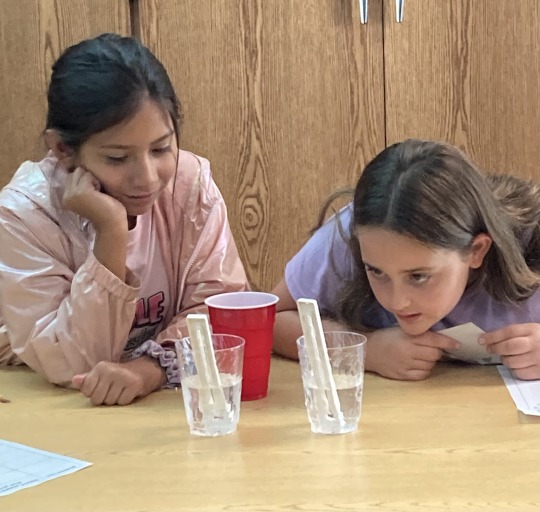
Tailored Learning - Recognizing diverse learning styles, instructional design customizes lessons. Visuals for visuals learners, hands-on for kinesthetic learners - everyone finds their pathway to understanding.

Teamwork thrives - Collaboration is key! Group projects and shared discoveries create a community where knowledge isn't just gained; it's shared, discussed, and celebrated together.
4 notes
·
View notes
Text

A Return, Anew: Into Nurturing
Greetings World!
I'm dusting off this old Tumblr after nearly 7 years to start a new project. And the timing feels meaningful - in Judaism, 7 is considered the number of spiritual fullness and completeness.
So here we are, in 2024 - 7 years after I last posted here regularly. It feels like the right time to pursue new depths of self-knowledge and balance. I want to understand how the different pieces of my life puzzle fit together; where my energy flows and where it's blocked.
Each year, I choose a new quote to guide me for the year to come - for 2024, I chose a quote from Buddhist-Vietnamese monk and one of my teachers, Thich Nhat Hanh, to carry me forward:
"Walk as if you are kissing the Earth with your feet."
I look to 2024 as a chance to sink deeper roots into this beautiful, blossoming life I’m building for myself. Thich Nhat Hanh's words will remind me to walk steadily yet lightly upon this precious Earth, embracing each breath as a gift. There is much more love to cultivate, still and despite.
In this coming year, I aim to be more rooted, intentional, and connected - to my new home in Philadelphia, its land and community, my body and spirit, my creative work, my relationships. After so much movement and flux these past few years, my goal for 2024 is to sink in deeply and mindfully, and pour my energy into what serves my raison d’être.
I'm divvying up my time and energy amongst different categories of creative pursuits and personal development goals:
Producing/performing theater and clown
Writing essays, poetry, and fiction
Navigating my day job in instructional design
Opportunities for teaching (clown, Jewish studies, yoga)
Travel and adventure
Building community and relationships in my new home
Nurturing my health and wellbeing
In times past, I have felt energized and focused by what I brought into my life; other times, I felt drained and overwhelmed by it all.
So this year, I'm going to document it - how I spend each week across these different areas. What activities feed me, versus take from me? When do I give too much and have nothing left for myself?
I'm reminded of a teaching from yoga philosophy around sthira and sukha - finding equilibrium between strength and comfort, effort and ease. I want to find that sweet spot, where I can walk the line between sthira and sukha in how I pace myself across all these different pursuits. Grounding down into steady effort when needed, while also cultivating softness and spaciousness.
So, once a week, I'll tally up the previous 7 days - what projects got my time and energy, what didn't, how balanced did I feel, what do I need more or less of, etc.
I'm hopeful this reflection will help me find alignment, purpose, and sustainability across the many beautiful puzzle pieces of my life.
As the Jewish tradition says, 7 is the number sitting at the center of it all, binding together the physical and spiritual worlds.
So, let the journey begin...
#nurture project#sthira#sukha#seven#kabbalah#judaism#yoga#clown#writing#poetry#essays#physical theater#fiction#instructional design#travel#adventure#teaching#community#relationships#intentional year#2024 planning#health#well being
3 notes
·
View notes
Text
Are educational games effective? How I use Games as Instructional Content
This post aims to spark conversation and inspire further exploration into the effective integration of games in educational contexts.
Twitter
Patreon
GitHub
LinkedIn
YouTube
In the vast landscape of education, the effectiveness of games as instructional content remains a subject of vibrant discussion and exploration. The question isn’t just whether educational games are effective, but how…
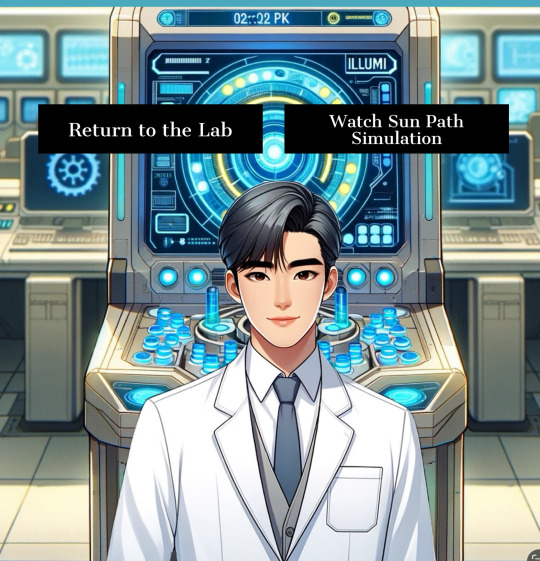
View On WordPress
#apc#choose your own adventure#ed tech#education#education technology#educational game#English teacher#game design#game design courses#games for learning#if#instructional design#interactive fiction#Jane mcgonigal#Jesse schell#Kansas City#Karl kapp#KCMO#learning game#narrative design#poet poetry#poets#point and click#raph koster#serious games#simulations#storyteller#storytelling#teachin*online#teaching English
2 notes
·
View notes
Text
This article from Inside Higher Ed has Four directions for assessment redesign in the age of generative AI
From written description to multimodal explanation and application
From literature review alone to referencing lectures
From presentation of ideas to defense of views
From working alone to student-staff partnership
4 notes
·
View notes
Text
Instructional Technology and Design Philosophy
I have always had a fascination, love, and passion for education. My experiences growing up were not the typical childhood education experiences. I grew up on a small island off the coast of North Carolina where I could often be found playing on the beach, in the woods, or by the sound. Our educational experiences on the island included marine biology and other non-traditional education experiences. This is what helped develop my love for the environment, environmental education, museums, and museum education. The island was home to both a lifesaving station museum and lighthouse museum. Many of my childhood school field trips were to these museums where I developed a love for learning through museum education. Museum and environmental passions have been woven throughout the rest of my life in various ways whether living on a military base visiting various base museums or enjoying nature programs at various museums. It wasn’t until my internship with Wyoming Wildlife Advocates and AmeriCorps in 2020 that I realized I wanted to become an instructional designer for a museum or with a school in regards to environmental education. Because we were in the middle of COVID-19 pandemic, this was a virtual internship. During this virtual internship, I helped to develop school age programs, both in person and virtual, regarding wildlife education and loved every minute of it. This is when I realized I wanted to pursue a career within the ITD field.
Instructional Design. Mercadai (2021) states that instructional design involves the practice of establishing the goals within instruction and what each learner requires, then being able to develop the groundwork and bridge between the two. Technology is a way to create a bridge between the two. The purpose of using instructional technology in museum education and schools is to enable students to learn and understand concepts with a variety of tools. Using technology within a museum education or school setting allows learners an opportunity that normally would not present itself in the traditional setting. I believe that instructional technology creates an avenue of multiple learning experiences which can help foster a level of learning that just using a traditional lecture style may not. I believe this is important. In the early 1900s, roots of instructional technology and design began with school museums followed by the use of educational television in the mid 1900’s. During the 1980’s, many students were exposed to computers in schools. 1991 changed the instructional design and technology field by the development of the world wide web (An, 2021). By the 2000’s social media had become a part of the instructional design and technology and educational history (An, 2021). One can see that the instructional design and technology field has been through vast amounts of change through the years. How do we as instructional and technology designers keep up with that change though and ensure the field continues to grow?
Philosophy. One of the ways I can ensure the ITD field continues to grow is through my own philosophy. By having a solid personal philosophy on instructional design and technology, this will help educate others in a positive and well-rounded manner. I believe each learner has the right to an inclusive, non-traditional, highly motivated learning experience that will expand their knowledge and form a basis for further questioning and want to seek more. My philosophy is based on a combination of theories including Howard Gardner’s multiple intelligence theory, John Dewey’s theory of participatory experience, and Vygotsky’s proximal development and scaffolding theories (Porcello, 2017). Gardner’s multiple intelligence theory states that “human beings have different ways in which they process data, each being independent” (Slidemodel, 2021). I believe Gardner’s theory of multiple of intelligence can be used within educational technology to have learners figure out what they are best at within that lesson and encourage their creativity. John Dewey’s theory of participatory experience states that “ education is learner based. Learning through experience is important” (Porcello, 2017). Porcello (2017) stated that “visitors want more engaging activities” within museum education. I believe educational technology is the perfect way to create this experience both at the museum and virtually, or within a classroom at a school. Vygotsky’s theory of proximal development and scaffolding states that “learning is social” and “students learn more through individuals who are more informed” (Porcello, 2017). Educational technology can help me build products and service, whether within a museum education or classroom setting, which can collaborative and foundationally fundamental allowing for growth.
My own personal philosophy also aligns with Moore’s (1989) Theory of Interaction. I believe educational technology allows for a more non-traditional approach to education, whether in museums or schools. By allowing people to learn not only through the content being created and through an instructor, but also by allowing the learners collaboration with each other, this will increase the learning experience. Bates (2015) SECTION model has now become a guide in assisting in the selection of educational technology tools. I now recognize that my own time is a valuable asset in the educational technology selection process.
By having a solid personal inclusive philosophy within educational technology and instructional design, this will help enhance the instructional design and technology field.
Reference:
An, Y. (2021). A history of instructional media, instructional design, and theories.
International Journal of Technology in Education (IJTE), 4(1), 1-21.
https://doi.org/10.46328/ijte.35
Mercadai, T. (2021). Instructional Design. Salem Press Encyclopedia.
Moore, Michael. (1989).Three Types of Interaction. American Journal of Distance Education. 3. 1-7. 10.1080/08923648909526659.
Porcello, J. (2017). Education Theories in Museums. https://sites.google.com/site/educationtheoriesinmuseums/
Slidemodel. (2021). Gardner’s Theory of Multiple Intelligences: 8 types of intelligences. https://slidemodel.com/gardners-theory-8-multiple-intelligences/
2 notes
·
View notes
Text

GUIDED PRACTICE:
MINDFUL BREATHING
Going mobile with a short vertical app-like e-learning course about mindful breathing: first how to, then a guided breathing practice.
Designed on Illustrator, animated on Storyline.
Breathing gif by Aline Moraes on Lottie Files.
5 notes
·
View notes
Text
<h1>Whats the first step in the search engine optimisation process for your website? +420 722 829 579</h1>
There are a unit variety of necessary technical problems that impact SEO efforts that require to be verified and corrected if required. These embrace website speed, website security, universal resource locator structure, crawlability, and mobile responsiveness. These statistics show however searchers square measure finding and interacting with the topic website. The alternative might be to hire an Adwords professional to help set up your initial campaign and to get things heading in the right direction. This may cost a little more, but if it can cut down your time and effort to winning business, it’s worth it. Normally, there will be competitors for the keyphrase, and the more you are willing to pay per click, the more clicks you’ll likely receive.
Alternatively, you can also grow your traffic with infographics. Similar to roundup posts, they compile complex information into easily digestible visuals that allow people to consume information at a glance. You might be surprised, but creating roundup posts can get you a lot of website traffic. Make sure your title and description are keyphrase-focused and naturally use them throughout your content. Ensure your landing page is well-designed and persuasive enough to improve your lead generation and sales.
Following the establishment of your chosen keyword phrases and starting position relative to the site’s competitive set, it is critical to determine the topic site’s starting position in search engines. This ensures that you are aware of the exact areas that require attention and gives a baseline against which to measure the effectiveness of the upcoming campaign. They represent an easier entry into search engine rankings, but with a smaller potential for traffic growth. The better visibility your pages have in search results, the more likely you are to garner attention and attract prospective and existing customers to your business.
However, what you want to do here is to cater to those results if possible. Note that you are only focusing on your low-hanging fruits, so make sure to reveal keywords placed between positions #2 to #15 with a minimum search volume of 100. However, you don’t need all of your competitor’s ranking keywords. Instead, choose to reveal important position rankings from #1 to #20. All you need to do is insert your competitor’s website URL, and the tool will help you analyze and find all your competitor’s ranking keywords.
Our webinar series includes talks on the latest innovations in search marketing, hosted by Moz’s team of subject matter experts. Long regarded as one of the most valuable places on the internet for SEO information, the Moz Blog is easy to explore by category and includes contributions from experts across the industry. The blog houses our popular Whiteboard Friday series as well as valuable updates several times per week on all areas of SEO. Discover courseware development and delivery -driving keywords for your site from our index of over 500 million real keywords. Don’t waste your time, prepare your exam and Instead of searching answers one by one, answers that you not find, or probably incorrects.
Adding relevant keywords to a web page's metadata, including the title tag and meta description, will tend to improve the relevancy of a site's search listings, thus increasing traffic. URL canonicalization of web pages accessible via multiple URLs, using the canonical link element or via 301 redirects can help make sure links to different versions of the URL all count towards the page's link popularity score. These are known as incoming links, which point to the URL and can count towards the page link's popularity score, impacting the credibility of a website. There is no way to guarantee a specific position in any search engine’s organic search results.
Staying on top and appearing on relevant queries thus has now become a necessary part of marketing. After all, the higher you appear in search results, the higher your visibility, which means more traffic and more conversions and revenue. Make sure you have alt tags set on your images, if possible with the keyword or related phrases in them. Select keywords that have a high rate of traffic volume and a low level of difficulty. Stridec is a top SEO agency in Singapore that can help you achieve your objectives with a structured and effective SEO programme that will get your more customers and sales. The numbers may vary on a per industry basis, but a survey our team conducted reported SEO to be the highest-returning marketing strategy in 2021.
#shopify#wordpress#content management#moodle#web design#web design and development#courseware development#instructional design#content marketing
2 notes
·
View notes
Text
Looking for suggestions here-
My next few grad courses start in a few days, and I’ll have to do yet ANOTHER introductory video for them. For previous videos, I’ve used: Audacity (audio file/editing), Powtoon (animated video template), and Debut (basically video editing, but my subscription is expired).
So, any suggestions for video or presentation apps that might serve? My goal for these is to sample different apps, and extend my skills.
1 note
·
View note
Text
7 Habits of Highly Effective Instructional Designers

What makes an instructional designer highly effective? In addition to being able to create powerful, engaging elearning courses, they have habits and personality traits that have helped them over time to continually improve their skills and become more successful in their careers. Let’s take a look at seven habits of highly effective instructional designers.
The first habit: Seek out and understand the context
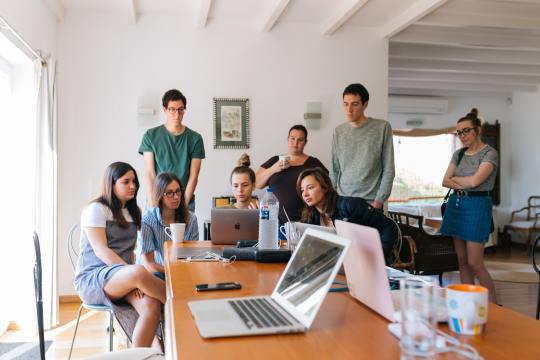
A successful I.D. thrives on context. Whether you are crafting a module for use in a corporate course or working with teachers to develop training, you need to understand their day-to-day realities and constraints. Doing so will influence everything from your topic choice and style to your slide design and delivery options. Take time to know who your audience is and what they do before designing an elearning course or learning experience that's going to be truly effective at teaching them something new. As instructional designers, we have a responsibility (not just an opportunity) to understand our learners' jobs and lives so that we can make our instruction as relevant as possible—and keep them engaged as well!
The second habit: Strive for quality and clarity in your communications

The instructional designer’s job is to communicate. If you aren’t communicating clearly, then you aren’t doing your job. Our words must convey our ideas in ways that make sense to others. In order to do that, we need to make sure our own ideas are clear and not ambiguous or misleading in any way. Instead of thinking about quality as an optional extra, work on understanding your readers and have confidence in your ability to connect with them even if it means asking for feedback along the way.
When we strive for clarity and quality in what we write, it makes a huge difference to those who read what we write. People will be able to understand us better when they read our instructional design documents because they will be more confident in what they’re reading. They won’t feel confused by unclear language, nor will they feel like they have to go back over something again because it didn’t quite make sense at first glance. When people don't know exactly what you mean, their attention can drift away from your message very quickly. So think about how you can increase clarity and avoid ambiguity wherever possible—even when writing short emails or text messages!
The third habit: Observe users

Learning from observation is a cornerstone of any design thinking methodology. For instructional designers, understanding how users use (or don’t use) your content can help you streamline your process and improve future instructional designs. This means learning about everything from user behavior to their motivations to how they interact with technology. You might even want to consider shadowing some of your users or conducting usability tests. Observation is an essential part of design thinking, so it should be at the core of every instructional designer's habits as well.
The fourth habit: Test early, test often

In instructional design, our job is to teach a learner how to do something that they may have never done before. The key word in that sentence is learner. We have to assume that no matter how prepared they are or how much we tell them what they will be learning, it doesn’t always make it through one ear and out of their brain. So if you have elearning development project, then think about testing your lessons with users as early and often as possible, including early on in development by asking someone who knows nothing about content or technology whether they understand what’s going on. Use all these tips (and more) when designing your next lesson plan!
The fifth habit: Create a culture of feedback

This habit is my personal favorite, and one that I’ve begun to implement in my own projects with great success. The more feedback you receive from your instructional design projects, both positive and negative, the better you can assess your abilities as an instructional designer. Ask others for their feedback on your designs. Not only will it help you improve your work, but it will show that you care about what others think, even if it is hard to hear at times. When someone provides constructive criticism, thank them for their input and be sure to address any concerns they might have raised.
If you disagree with something they said, explain why; if they misunderstood something, try to clarify it. Remember: most people are genuinely trying to help! Your fifth habit should be focused on building a culture of feedback among colleagues and friends who are also instructional designers. Asking people how they feel about your work may seem like a strange thing to do (it certainly does feel weird when I ask), but remember: these are people who know you well enough that they know how much effort went into creating your design (or at least part of it). They want what's best for you too!
The sixth habit: Set priorities

Your first goal should be to create one great course. Focusing on creating quality eLearning over quantity is not only wise, but will make your portfolio grow faster. Most companies will only hire instructional designers who can prove they have experience creating eLearning that adds value to a company. Create high-quality courses early in your career and you’ll find it easier to land work later on. Also, since so many people are creating online training today, there are plenty of low-cost or free templates available. Don’t feel like you need to reinvent the wheel with every new project. Learn from what others have done before you—and don’t try to compete with their work. You may think your designs are better than theirs—but even if they aren't right now, give yourself time to learn and grow as an instructional designer before competing with experienced professionals!
The seventh habit: Keep learning

Being an instructional designer is a challenging job, which can make it difficult to stay current on trends and best practices. Taking time to learn new skills and become more familiar with what’s out there keeps you up-to-date in your field, enables you to meet client needs, and enhances your ability to deliver top-notch elearning that achieves desired results. While learning doesn’t necessarily have to take place at work—in fact, taking time outside of work can provide valuable perspective—it is critical that instructional designers continually strive for professional development. Keeping tabs on industry news through blogs, social media groups, conferences, seminars and workshops ensures that they’re always working towards new goals.
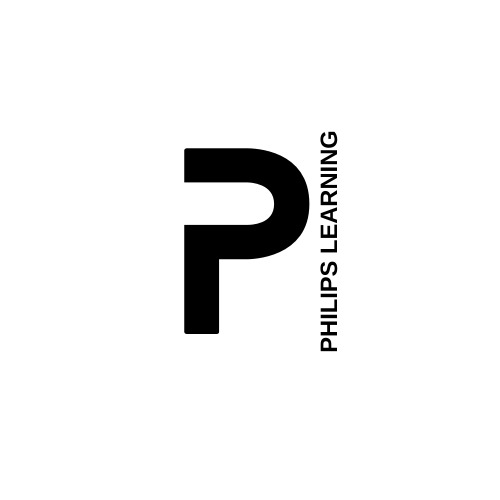
Meet Philip, who is optimistic by nature, a teacher by profession, and a musician by selection. He is passionate about learning experience, accessible learning, interactive learning, instructional design, learning strategy and a lot more. Check out his talks in Philips Learning Hub or Philips Learning Talks YouTube Channel.
Our USP is Minute to Learn It
Philips Learning is one of the leading educators of Articulate Storyline 360 How-To video tutorial (world's best elearning platform).
4 notes
·
View notes
Text
Discover how software simulations enhance learning and training by providing interactive, hands-on experiences for better skill development.
Read our blog:- Infonative/blogs

#e learning#learning management system#instructional design#e lectronic learning#gamification#learning
0 notes
Text
Applying Gagné’s Nine Events of Instruction to Microlearning: A Comprehensive Guide
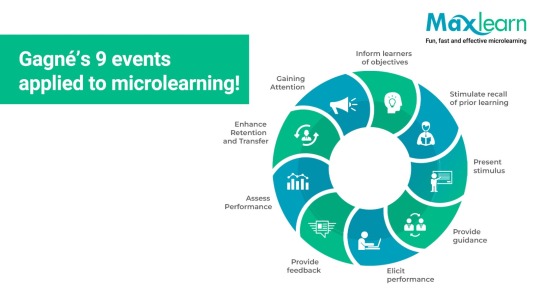
Introduction:
Gagné’s Nine Events of Instruction is a widely recognized instructional design framework that outlines the essential steps for effective learning experiences. As the landscape of education and training evolves, the integration of Gagné’s principles into microlearning has become increasingly relevant. This post explores how Gagné’s Nine Events of Instruction can be applied to microlearning, enhancing learning outcomes and driving engagement.
Gain Attention:
The first event in Gagné’s framework is to capture learners’ attention and stimulate their interest in the topic. In microlearning, this can be achieved through attention-grabbing titles, intriguing visuals, or interactive elements. By presenting learners with a compelling hook, microlearning modules can pique their curiosity and encourage active engagement from the outset.
Inform Learners of the Objective:
Once attention is gained, learners need to understand the learning objectives and what they are expected to achieve. In microlearning, clear and concise objectives are essential to guide learners’ focus and inform their expectations. By stating the learning objectives upfront, microlearning modules establish a clear direction for learners and align their efforts with desired outcomes.
Stimulate Recall of Prior Learning:
Building on learners’ existing knowledge and experiences is crucial for effective learning. In microlearning, brief review exercises or quizzes can help stimulate recall of prior learning and activate relevant mental schemas. By connecting new information to what learners already know, microlearning fosters deeper understanding and facilitates knowledge retention.
Present the Content:
The core of microlearning involves delivering the instructional content in bite-sized chunks. Each microlearning module should focus on a specific concept or skill, presented in a concise and accessible format. Whether through videos, infographics, or interactive scenarios, microlearning content should be engaging, relevant, and easy to digest.
Provide Guidance:
In microlearning, learners may require guidance on how to apply the newly acquired knowledge or skills. This event involves providing learners with clear instructions, examples, or demonstrations to facilitate understanding and application. By offering guidance within microlearning modules, learners can bridge the gap between theory and practice, enhancing their ability to transfer learning to real-world situations.
Elicit Performance:
The next step is to provide learners with opportunities to practice and apply what they have learned. In microlearning, interactive exercises, simulations, or case studies can be used to elicit performance and assess mastery of the content. By engaging in hands-on activities within microlearning modules, learners can reinforce their learning and develop proficiency in targeted skills.
Provide Feedback:
Feedback is essential for guiding learners’ progress and reinforcing desired behaviors. In microlearning, immediate and personalized feedback can be delivered through interactive assessments or branching scenarios. By providing constructive feedback within microlearning modules, learners can identify areas for improvement and make necessary adjustments to their learning approach.
Assess Performance:
Assessing learners’ performance allows for ongoing evaluation and adjustment of the learning process. In microlearning, formative assessments or knowledge checks can be embedded throughout the content to gauge learners’ understanding and retention. By assessing performance within microlearning modules, instructors can identify learning gaps and tailor subsequent instruction to meet learners’ needs.
Enhance Retention and Transfer:
The final event focuses on promoting long-term retention and transfer of learning to real-world contexts. In microlearning, spaced repetition techniques or summary modules can be used to reinforce key concepts and facilitate transfer of learning. By revisiting and reinforcing key ideas within microlearning modules, learners can solidify their understanding and apply their knowledge in diverse settings.
Conclusion:
By applying Gagné’s Nine Events of Instruction to microlearning, organizations can create highly effective and engaging learning experiences. Whether capturing learners’ attention, presenting content, or providing feedback, each event plays a crucial role in shaping the overall learning journey. By leveraging microlearning as a vehicle for instructional design, organizations can maximize learning outcomes and empower learners to achieve their full potential.
#Gagné’s Nine Events of Instruction#Microlearning#Instructional design#Learning objectives#Engagement#Attention#Recall#Bite-sized content#Guidance#Performance feedback#Assessment#Retention#Transfer of learning#Interactive learning#Formative assessment
0 notes
Text
Using Instructional Design to Improve Learning Environments
Photo by Kenny Eliason
Using Instructional design to improve learning environments is a concept slowly becoming a requirement in education and industry. Although instructional design only recently becoming a phrase more widely used it has been a subject of discussion and study for many years.
Visionaries?
In 1964, Gene Roddenberry created Star Trek based on a society that had forgone currency…

View On WordPress
#Assessment and Evaluation#Blended Learning#Content Development#Curriculum Design#E-Learning#EdTech Trends#Educational Resources#Educational Technology#Gamification in Education#Instructional Design#Instructional Design Models#Instructional Strategies#Interactive Learning#Learning Management Systems (LMS)#Microlearning#Mobile Learning#Online Learning#Professional Development for Educators#Training and Development#User Experience (UX) in Learning
1 note
·
View note
Text
Writing As Therapy, Sure, But Gaming as a “Self-Care” Ritual? Here’s Why
A Case for Games as Over-The-Counter Wellness Tools
Just like a daily multivitamin or a cup of tea, games have become a form of self-care for many individuals. In a fast-paced world filled with stress and anxiety, taking a break and indulging in a game can have a profound impact on one’s mental and emotional well-being.
Studies have shown that playing games can improve mood, reduce stress, and…
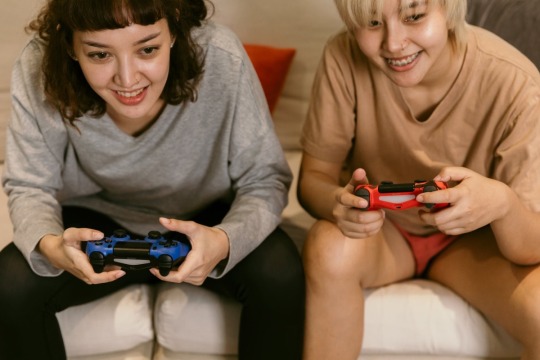
View On WordPress
#anxiety#community#critical theory#critical thinking#depression#digital community#dramaturge#education#game studies#gamebased learning#gamer#gamers#GBL#human psychology#instructional design#loneliness#meditation#mental health#mmorpg#multiplayer#narrative design#neurodiversity#psychology#ptsd#storyteller#teaching#trauma#ui#user experience#user interface
3 notes
·
View notes
Text

Hi! I’ve been gone for a while but I’m back with a new job and a new lease on life!
0 notes
Link
In recent years, instructional design services have emerged as a catalyst for transforming traditional learning methods. With advancements in technology and the changing needs of learners, traditional approaches to education are being reimagined to provide more engaging, personalized, and effective learning experiences. In this blog post, we will explore the future of instructional design services and how they are reshaping the landscape of education.
#instructional design services#instructional design#instructional services#eLearning#learning design
0 notes